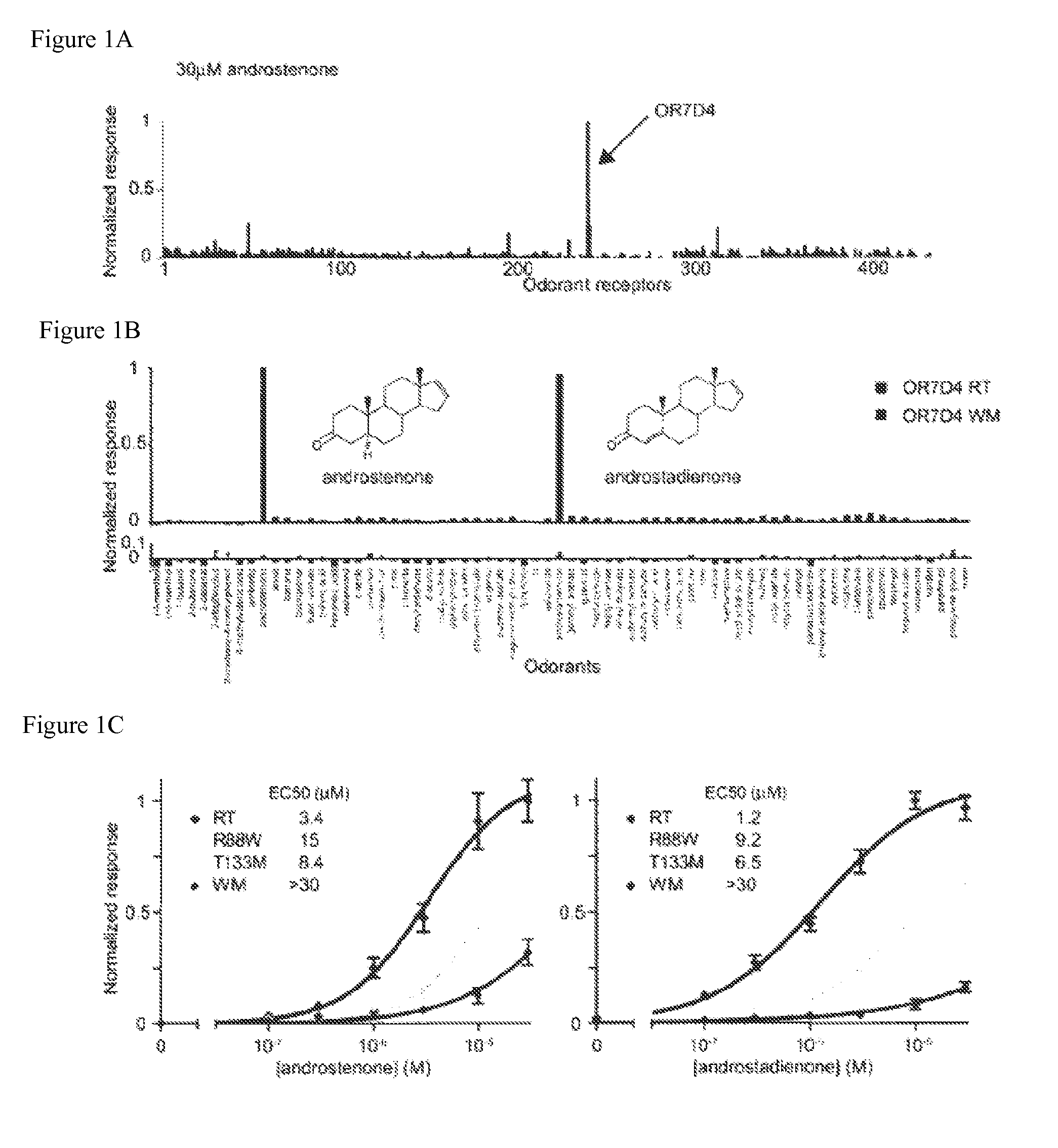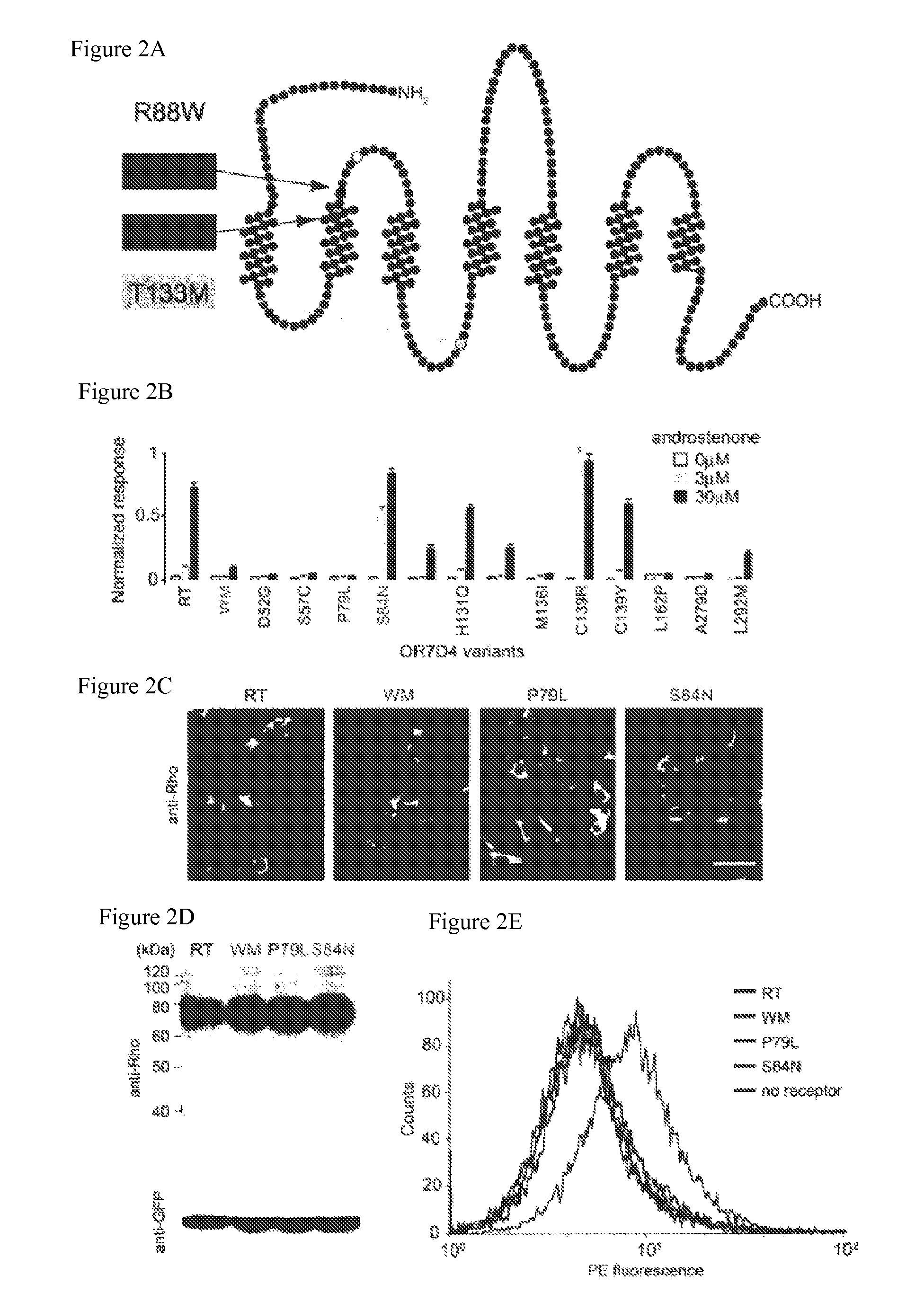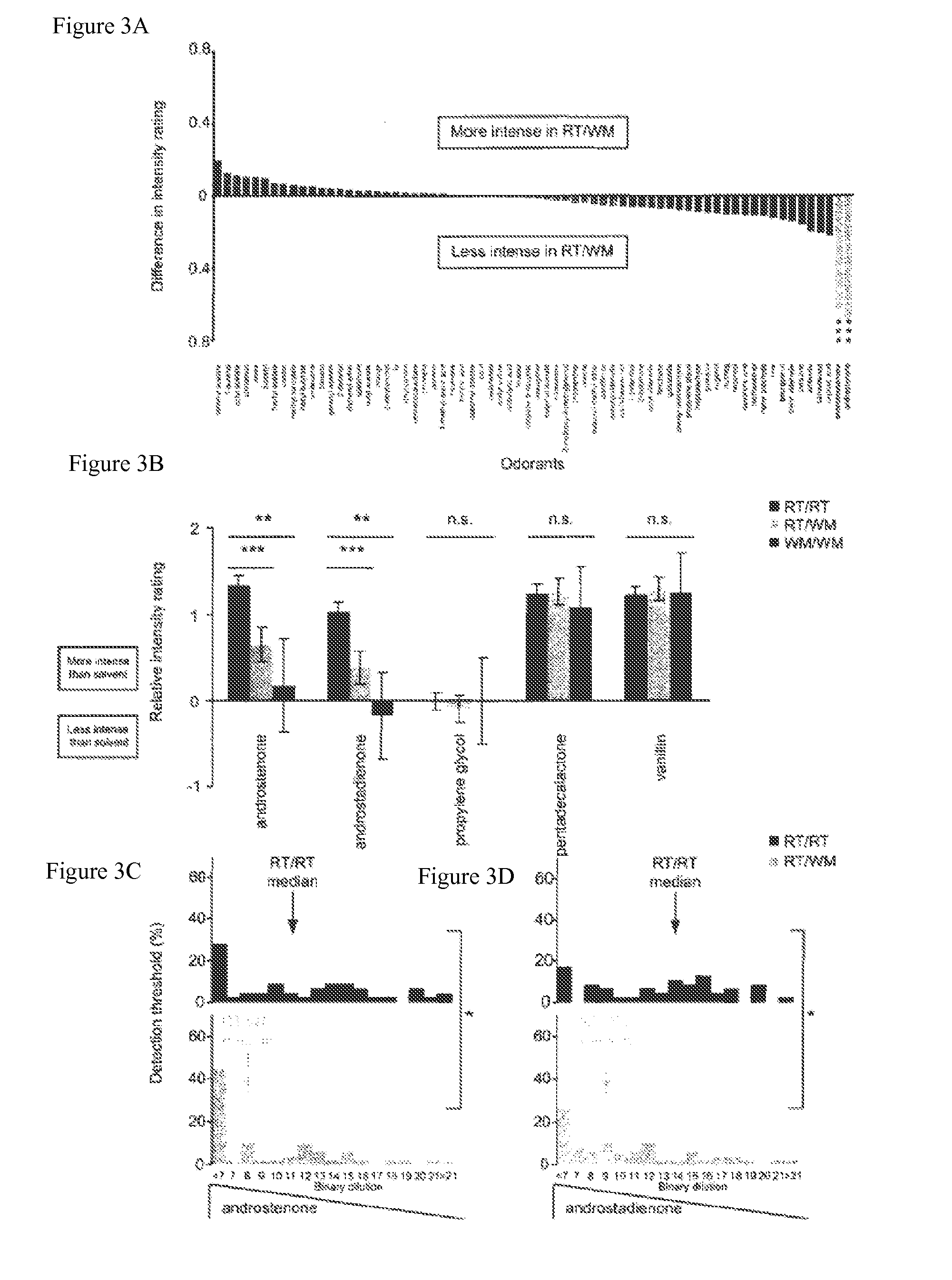Compositions and methods for characterizing and regulating olfactory sensation
a technology of odorant receptors and compounds, applied in the field of odorant receptor characterization, can solve the problems of affecting the olfactory, adversely affecting food preference, food intake and appetite, and affecting the smell sensation, so as to improve the ability to smell steroid odor, enhance or diminish, and increase or7d4 activity
- Summary
- Abstract
- Description
- Claims
- Application Information
AI Technical Summary
Benefits of technology
Problems solved by technology
Method used
Image
Examples
example 1
[0240]The hypothesis that polymorphisms in odorant receptors contribute to the variability in human odor perception was investigated by combining a cell-based assay technique to deorphanize odorant receptors (see, e.g., Saito, H., et al., Cell 119:679-691 (2004); herein incorporated by reference in its entirety) with an olfactory psychophysics study of a diverse population of human subjects (see, e.g., Keller, A., et al., Curr Biol 14, R875-878 (2004); herein incorporated by reference in its entirety). A panel of 337 human odorant receptors was cloned and expressed in Hana3A cells, an HEK293T-derived cell line stably expressing accessory factors for odorant receptor expression (see, e.g., Saito, H., et al., Cell 119:679-691 (2004); herein incorporated by reference in its entirety), and screened for androstenone-mediated stimulation. A single odorant receptor, OR7D4, showed robust responses to this ligand (see FIG. 1a).
[0241]A search for polymorphisms in OR7D4 in existing SNP databas...
example ii
[0243]The ligand specificity of both receptor variants in vitro was investigated against a panel of 66 odors and two solvents using a luciferase assay that converted odorant receptor activation to reporter gene activity. OR7D4 RT responded selectively to androstenone and the closely related odorous steroid, androstadienone, but showed no responses to any of the other 64 odors or two solvents (FIG. 1b, top). OR7D4 WM showed no response to any compound at the concentrations tested here (FIG. 1b, bottom). Dose response curves with OR7D4 RT and OR7D4 WM suggested that the paired SNPs in the WM variant severely impaired the function of this receptor (FIG. 1c). To investigate whether one or both of the variant residues caused this effect, ORs with each one of the SNPs were generated. OR7D4 R88W and OR7D4 T133M retained an intermediate level of function relative to OR7D4 RT indicating that both R88 and T133 residues contributed to the function of OR7D4 (FIG. 1c). OR7D4 is situated on chrom...
example iii
[0245]This example describes the mechanism by which OR7D4 polymorphisms affect receptor function. The subcellular distribution, expression levels, and cell-surface distribution of the four major variants of OR7D4 (e.g., OR7D4 RT, OR7D4 WM, OR7D4 P79L, OR7D4 D52G, OR7D4 S75C, OR7D4 M136I, OR7D4 L162P, OR7D4 A279D, OR7D4 L292M, OR7D4H131Q, and OR7D4 C139Y) in Hana3A cells with an antibody that recognized the N-terminal epitope tag of the OR7D4 variants. Immunofluorescence staining of OR7D4 RT, OR7D4 WM, OR7D4 P79L, OR7D4 D52G, OR7D4 S75C, OR7D4 M136I, OR7D4 L162P, OR7D4 A279D, OR7D4 L292M, OR7D4H131Q, and OR7D4 C139Y proteins in permeabilized cells revealed no difference in subcellular distribution or expression level (FIG. 2c). Western blot analysis confirmed that all were expressed at comparable levels (FIG. 2d). Next, differences in cell surface expression were investigated to account for the functional differences between the variants. Flow cytometly analysis of live cells showed ...
PUM
| Property | Measurement | Unit |
|---|---|---|
| temperature | aaaaa | aaaaa |
| conductive | aaaaa | aaaaa |
| nucleic acid sequence | aaaaa | aaaaa |
Abstract
Description
Claims
Application Information
 Login to View More
Login to View More - R&D
- Intellectual Property
- Life Sciences
- Materials
- Tech Scout
- Unparalleled Data Quality
- Higher Quality Content
- 60% Fewer Hallucinations
Browse by: Latest US Patents, China's latest patents, Technical Efficacy Thesaurus, Application Domain, Technology Topic, Popular Technical Reports.
© 2025 PatSnap. All rights reserved.Legal|Privacy policy|Modern Slavery Act Transparency Statement|Sitemap|About US| Contact US: help@patsnap.com



